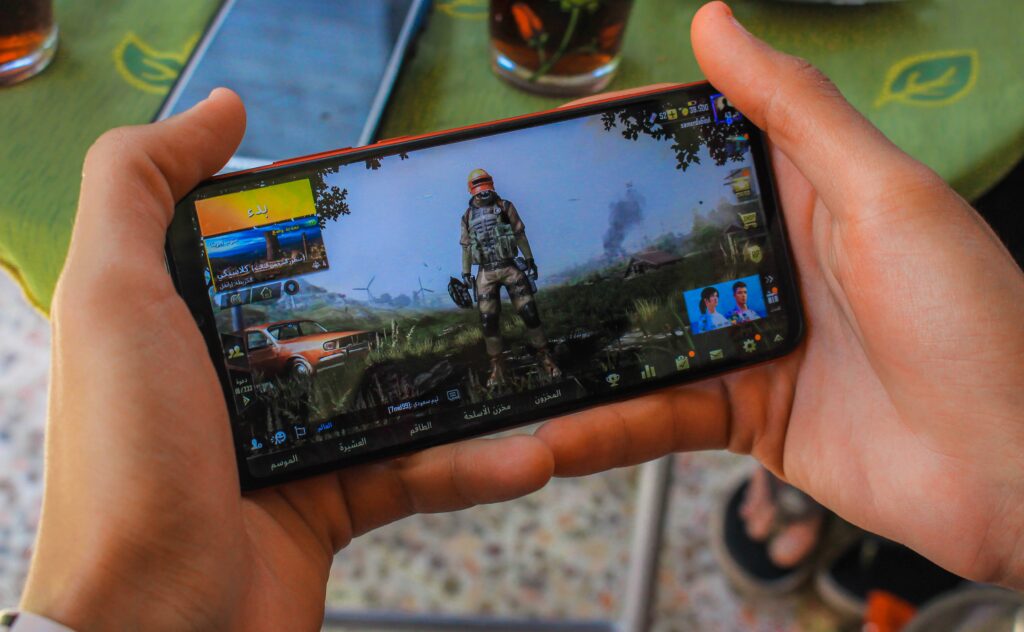In the world of video games, mobile gaming stands out as a dominant force, and one that increases in popularity day after day. To ensure that games are launched with good quality and free of bugs, mobile game testing becomes a focal point in the industry.
With millions of games available at the tap of a screen, developers face intense competition to deliver experiences that captivate audiences. And behind every successful mobile game lies a rigorous process of development and testing to ensure quality and functionality.
In this article, we will delve into the realm of mobile game testing, exploring its importance, challenges, and common testing strategies used throughout the industry.

Mobile game testing: a brief overview
The quality of a game is its most important aspect in the ever-competitive world of mobile gaming. A glitch or bug can swiftly turn players away, tarnishing a developer’s reputation and hindering the game’s success.
For that reason, mobile game testing is indispensable to identify and fix issues before they reach the end-user. This testing may encompass various aspects, such as functionality, performance, compatibility, usability, and security.
From ensuring smooth gameplay across diverse devices to verifying in-app purchases and multiplayer functionality, testers meticulously examine every element of the gaming experience.
With the proliferation of mobile devices boasting different screen sizes, operating systems, and hardware specifications, testing becomes even more challenging, as it must validate the game’s compatibility across a spectrum of devices to guarantee a seamless experience for all users.
Most popular mobile game testing strategies
To navigate the complexities of mobile game testing, professionals in the industry employ a myriad of methodologies tailored to uncover potential defects in games and enhance user satisfaction.
Despite the advancements in AI, manual testing is still one of the best mobile game testing strategies. No AI can replace human creativity and boundary-pushing capabilities, so human interaction is still the first line of defense when it comes to testing.
Human testers play a pivotal role in scrutinizing the game’s features, mechanics, and interfaces. By engaging with the game in real-world scenarios, they can identify glitches, inconsistencies, and gameplay issues that automated tests may overlook.
But that doesn’t take the credit from automated tests; in fact, they are the centerpiece of many mobile game testing strategies. They are often used to test the bulk of a game, and then a human test is implemented to experience a more finalized product and fine-tune its aspects.
Automation accelerates the testing process by executing predefined scripts to validate various aspects of the game. This approach is effective for repetitive tasks, such as regression testing and performance benchmarking, allowing testers to focus their efforts on more intricate aspects of quality assurance.
And this quality needs to be maintained across all possible devices on which the game will be played. So, given the diverse ecosystem of mobile devices, compatibility testing is indispensable.
Testers assess the game’s performance across different devices, screen sizes, resolutions, and operating systems to ensure uniform functionality and optimal user experience.
Aside from these technical aspects, there is also the testing of the gameplay itself, which is called usability testing.
It focuses on evaluating the game’s intuitiveness, navigation, and overall user experience. Testers gather feedback from players to identify pain points, preferences, and areas for improvement, informing iterative refinements to enhance user satisfaction.
And finally, performance testing scrutinizes the game’s responsiveness, stability, and resource utilization under various conditions. Testers simulate scenarios of heavy usage, network fluctuations, and device constraints to assess the game’s robustness and scalability.
The 3 biggest challenges in mobile game testing

1 – Device fragmentation
The sheer diversity of mobile devices, including smartphones, tablets, and various operating systems, presents a formidable challenge for mobile game testing. This fragmentation extends not only to hardware specifications but also to screen sizes, resolutions, and software versions.
To address this challenge, testers must conduct meticulous planning and prioritization to cover the most prevalent device configurations effectively. This involves creating a comprehensive matrix of devices to test on, considering factors such as market share, user demographics, and performance benchmarks.
Additionally, leveraging automation tools and cloud-based testing platforms can help streamline the testing process across a wide range of devices.
2 – Rapid development cycles
In the fast-paced world of mobile game development, developers frequently release updates, patches, and new content to keep players engaged and address issues swiftly. This rapid development cycle places significant pressure on testers to adapt to compressed timelines without compromising the thoroughness of testing.
Testers must employ agile methodologies and collaborative workflows to keep pace with developers while maintaining the integrity of the testing process.
This may involve continuous integration and continuous testing practices, where automated tests are integrated into the development pipeline to catch regressions early and ensure stable releases.
Additionally, effective communication and feedback loops between testers, developers, and other stakeholders are essential for identifying and resolving issues efficiently.
3 – Network variability
Mobile games often rely on network connectivity for features such as multiplayer functionality, social interactions, and in-game purchases. However, they are susceptible to performance issues stemming from fluctuating network conditions, including latency, packet loss, and bandwidth constraints.
Testers must simulate diverse network environments to gauge the game’s resilience and responsiveness under real-world conditions.
This involves testing the game across different network types (3G, 4G, Wi-Fi) and scenarios (low signal strength, congested networks) to identify potential bottlenecks and optimization opportunities.
They should also utilize network emulation tools and network virtualization techniques to replicate various network conditions in a controlled environment.

Are you ready to test your game?
As you can see, mobile game testing is a pivotal step in the creation of any mobile game. It ensures the functionality, compatibility, usability, and performance of the game across an expansive landscape of devices.
As the mobile gaming industry continues to evolve, testers must adapt to emerging technologies, user preferences, and market trends to uphold the standards of excellence expected by players worldwide.
We here at Main Leaf know very well the importance of mobile game testing. Over our 12 years of experience in the video game development industry, we have seen time and time again this importance in the countless games we ourselves have tested.
If you liked this article, check out our blog, where we discuss many other aspects relating to the world of video games and video game development.

